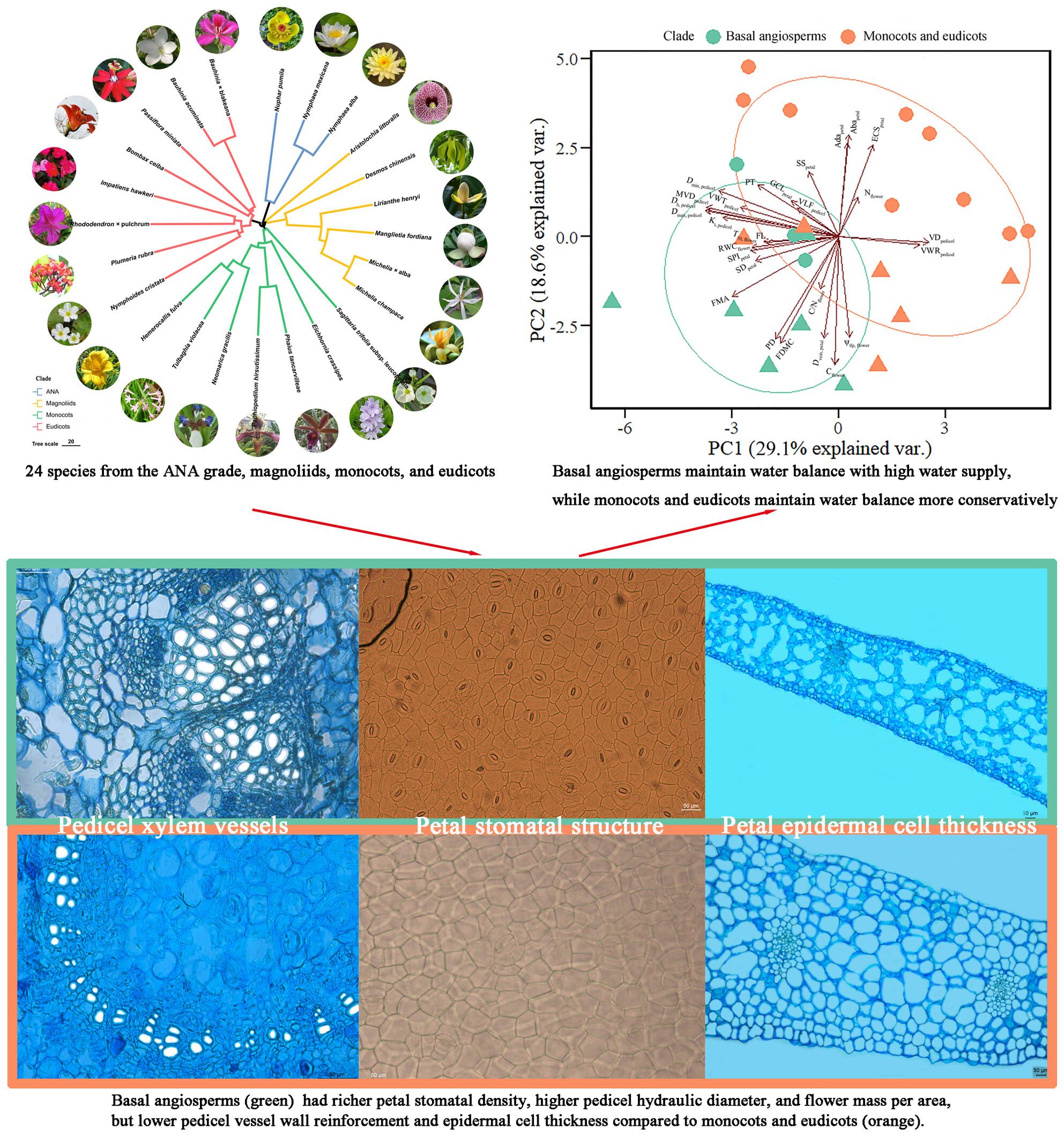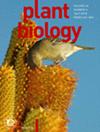Monocots and eudicots have more conservative flower water use strategies than basal angiosperms
IF 4.2
3区 生物学
Q1 PLANT SCIENCES
引用次数: 0
Abstract
- Water balance is crucial for the growth and flowering of plants. However, the mechanisms by which flowers maintain water balance are poorly understood across different angiosperm branches.
- Here, we investigated 29 floral hydraulic and economic traits in 24 species from ANA grade, magnoliids, monocots, and eudicots. Our main objective was to compare differences in flower water use strategies between basal angiosperms (ANA grade and magnoliids) and derived group (monocots and eudicots).
- We found that basal angiosperms had richer petal stomatal density, higher pedicel hydraulic diameter, and flower mass per area, but lower pedicel vessel wall reinforcement and epidermal cell thickness compared to monocots and eudicots. We also observed significant trade-offs and coordination among different floral traits. Floral traits associated with reproduction, such as floral longevity and size, were strongly linked with physiological and anatomical traits.
- Our results systematically reveal the variation in flower economic and hydraulic traits from different angiosperm branches, deepening understanding of flower water use strategies among these plant taxa. We conclude that basal angiosperms maintain water balance with high water supply, whereas monocots and eudicots maintain a more conservative water balance.


与基生被子植物相比,单子叶植物和真叶植物的花水利用策略更为保守。
水分平衡对植物的生长和开花至关重要。然而,人们对不同被子植物分支中花维持水分平衡的机制了解甚少。在这里,我们研究了 ANA 级、木兰科、单子叶植物和真叶植物中 24 个物种的 29 个花水力和经济性状。我们的主要目的是比较基生被子植物(ANA级和木兰科)与衍生类(单子叶植物和裸子植物)之间花水利用策略的差异。我们发现,与单子叶植物和裸子植物相比,基生被子植物具有更丰富的花瓣气孔密度、更高的花梗水力直径和单位面积的花朵质量,但花梗血管壁强化程度和表皮细胞厚度较低。我们还观察到不同花性状之间存在明显的权衡和协调。与繁殖相关的花性状,如花的寿命和大小,与生理和解剖性状密切相关。我们的研究结果系统地揭示了不同被子植物分支在花的经济和水力性状方面的差异,加深了人们对这些植物类群的花水利用策略的理解。我们的结论是,基生被子植物在高供水量下保持水分平衡,而单子叶植物和真叶植物则保持较为保守的水分平衡。
本文章由计算机程序翻译,如有差异,请以英文原文为准。
求助全文
约1分钟内获得全文
求助全文
来源期刊

Plant Biology
生物-植物科学
CiteScore
8.20
自引率
2.60%
发文量
109
审稿时长
3 months
期刊介绍:
Plant Biology is an international journal of broad scope bringing together the different subdisciplines, such as physiology, molecular biology, cell biology, development, genetics, systematics, ecology, evolution, ecophysiology, plant-microbe interactions, and mycology.
Plant Biology publishes original problem-oriented full-length research papers, short research papers, and review articles. Discussion of hot topics and provocative opinion articles are published under the heading Acute Views. From a multidisciplinary perspective, Plant Biology will provide a platform for publication, information and debate, encompassing all areas which fall within the scope of plant science.
 求助内容:
求助内容: 应助结果提醒方式:
应助结果提醒方式:


